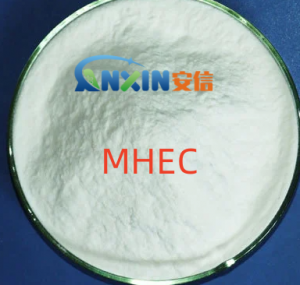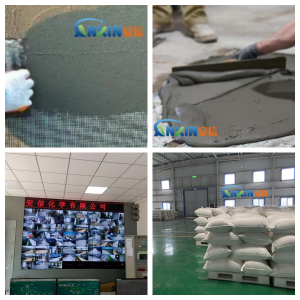MHEC in surface treatment mortar
1. Overview of MHEC
MHEC (Methyl Hydroxyethyl Cellulose) is a non-ionic cellulose ether. Due to its excellent thickening, water retention, and improved construction performance, it is widely used in the field of dry-mixed mortar, especially in surface treatment mortar (such as putty, leveling mortar, and interface mortar). The main function of surface treatment mortar is to repair the base surface, improve the surface flatness, and improve the adhesion and decorative effect of the finishing layer, so it has high requirements for construction performance and finished product quality. As a key additive, MHEC can effectively optimize the rheology, construction time and final performance of the mortar.
2. The main role of MHEC in surface treatment mortar
2.1. Excellent water retention performance
MHEC’s hydrophilic groups can form a stable hydration film in the mortar, significantly reducing the loss of mixing water in the base and air, thereby ensuring full hydration of cement and improving early strength and adhesion. Good water retention can also effectively prevent mortar shrinkage and cracking, and improve surface density and durability.
2.2. Improve construction and workability
Surface treatment mortar needs to be smooth, easy to scrape and not sag. MHEC can improve the adhesion and lubricity of mortar, reduce splashing and sticking during construction, and make the mortar spread evenly on the wall or ceiling. Especially in thin-layer construction, MHEC can ensure that the mortar has good anti-sag performance, improve construction efficiency and finished product flatness.
2.3. Thickening and rheological regulation
MHEC has a significant thickening effect. It can control the viscosity and thixotropy of the mortar system, so that the mortar has good fluidity when stirring, and can quickly thicken after standing, reducing material falling. This feature is particularly important for scraping construction, which can effectively improve the interlayer adhesion and the final finishing quality.
2.4. Improve the bonding strength of mortar
MHEC’s water retention and film-forming properties can promote the full hydration of cement, while forming a microscopic fiber network structure in the hardened layer, enhancing the mechanical bite of the mortar on the base layer, and reducing the risk of hollowing, delamination and cracking.
2.5. Extend the open time
In high temperature or dry environment, mortar tends to lose water too quickly and reduce construction performance. MHEC can extend the open time of mortar, giving construction workers more opportunities for adjustment and finishing, thereby improving the overall construction quality.
3. Factors affecting MHEC performance
Substitution degree and viscosity: The methyl and hydroxyethyl substitution degrees of MHEC and the solution viscosity determine its water retention and thickening ability. High substitution degree usually brings better water retention and construction lubrication.
Dosage control: The amount of MHEC added needs to match the mortar design. Too low will lead to sagging and insufficient water retention, while too high may affect strength development and economy.
Construction environment: Temperature, humidity and wind speed will affect the water retention performance of MHEC in mortar. The amount of addition may need to be appropriately increased in high temperature and dry environment.
Synergy with other additives: MHEC is often used in combination with redispersible latex powder, starch ether, etc. to optimize water retention, bonding and anti-cracking properties.
4. Application advantages and development trends
Adding MHEC to surface treatment mortar can significantly improve construction efficiency, improve surface quality and extend the service life of the finishing layer. With the development of green building materials and environmentally friendly buildings, low-viscosity, high-water-retention MHEC products will become more popular. At the same time, for extreme climate construction environments, the development of new MHECs with high temperature resistance and stronger water-retention performance will become the research direction of the industry.
MHEC plays multiple roles in surface treatment mortar, including water retention, thickening, improving construction performance and improving adhesion. It is a core additive to improve the construction performance and durability of mortar. By scientifically selecting MHEC specifications and dosages and reasonably matching other additives, the high performance of surface treatment mortar and the overall improvement of construction quality can be effectively achieved.
Post time: Jul-26-2025








